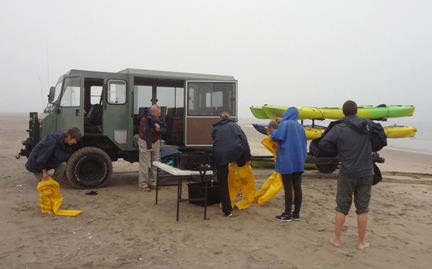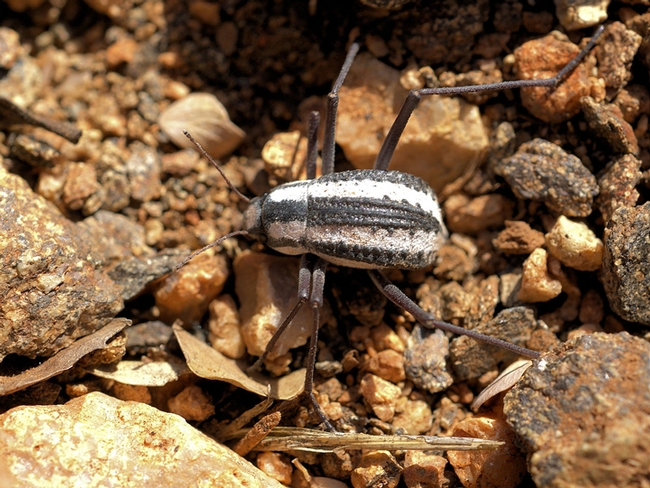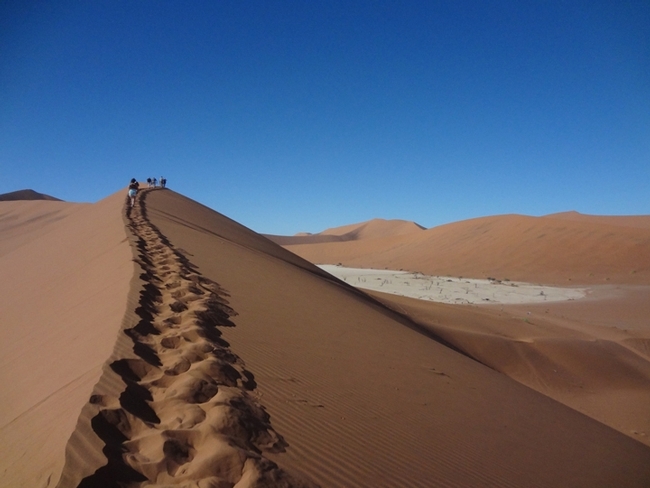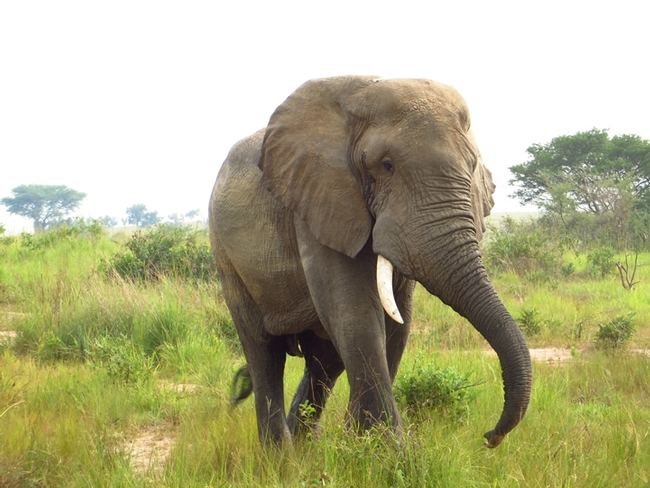
If you're James R. Carey , distinguished professor of entomology at UC Davis, and you're in Africa, you also video them--insects like fog-harvesting Namib Desert beetle.
The Namibian Beetle (Stenocara gracilipes) lives in the Namib Desert, one of the driest deserts in the world. Located on the southwest coast of Africa, the desert receives only 0.55 of an inch of rain a year, according to Wikipedia. The beetle survives by harvesting the early morning fog, which is why it's called the fogstand beetle or "the fog-harvesting Namib Desert beetle."
Carey will show a video of the beetle, along with bigger critters, including elephants, giraffes, lions, gorillas, chimpanzees, next Wednesday, May 6 when he gives a special presentation at UC Davis on “African Odyssey: A Natural History and Cultural Journey Through Uganda, Namibia and Kenya.”
The presentation, open to all interested persons, will be from 12:10 to 1 p.m. in 122 Briggs Hall, Kleiber Hall Drive. Sponsored by the UC Davis Department of Entomology and Nematology, it will be video-recorded and posted on the Internet for later viewing.
Carey's highly produced, digitally sophisticated production will include photographs, video and audio of wildlife, people and places that he and his wife, Patty, experienced while traveling in three African countries.
The African country of Namibia, one of the least densely populated countries in the world, should be on everyone's bucket list, Carey says.
"Africa is a cultural and natural history treasure trove that far exceeded our expectations on all of our road trips through several countries. One of the continent's best kept secrets is the country of Namibia in the southwest with its stunning beauty, friendly people, impressive roads and national parks teaming with wildlife. It is on few people's bucket list of places to visit---but it should be at the top of the list for Africa."
Carey, who received the 2015 Distinguished Teaching Award from the Pacific Branch of the Entomological Society of America (PBESA) for his technological innovations, creativity and excellence in the UC system and beyond, has taught video instruction methods for the 9-university Consortium for Advanced Research Training in Africa, including Nairobi, Kampala and Uganda for several years.
The presentation will include includes material from their 2,000 mile road trip in Uganda (2014) to see the critically endangered mountain gorillas in the Bwindi Impenetrable Forest, the Batwa Pigmys in Mgahinga National Park, chimpanzees at the Budongo Field Station, and wildlife in Murchison Falls National Park (Nile headwaters).
Their 1,800 mile road trip around Namibia (2015) included safaris in Etosha National Park, an overland expedition to see the desert elephants in Twyfelfontein, a drive along the Skeleton Coast, a walk through the world's largest fur seal colony at Cape Cross, a kayak adventure among swimming seals in Walvis Bay, guided tours through Himba and Damara tribal villages, and a trek along the crest of the world's second highest sand dune (Sossusvlei's Big Daddy).
He also will engage his audience with the sights and sounds of the fog-harvesting Namib Desert beetle, the “click language” of bushmen, ancient petroglyphs, and the professional Safari Cats Dancers & Acrobats from Nairobi.
Professor Carey videographed the trip, while his wife Patty and sister-in-law Barbara Brown captured the still photographs.
Namibia, a former Germany colony, is named for the Naimb Desert, considered the oldest desert in the world. Only 2.1 million people live in Namibia, one of the world's smallest countries.
Carey last year received the 2014 Distinguished Teaching Award from the UC Davis Academic Senate, an honor given to internationally recognized professors who excel at teaching.
(Editor's Note: The May 6th presentation is online at https://www.youtube.com/watch?v=meM3u6CW0Rs)
Attached Images:

A Racing Stripe Darkling Beetle at Epupa Falls, Namibia. (Photo by Hans Hillewaert, Courtesy of Wikipedia)

The world's second highest sand dune (Sossusvlei's Big Daddy). (Photo by Patty Carey)

Entomologist James R. Carey also took an interest in elephants on his African Odyssey. This is an African elephant in Murchison Falls National Park, Uganda. (Photo by Patty Carey)